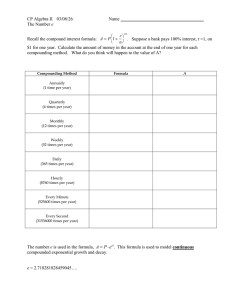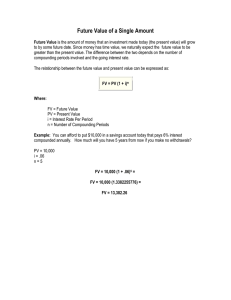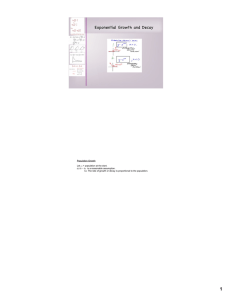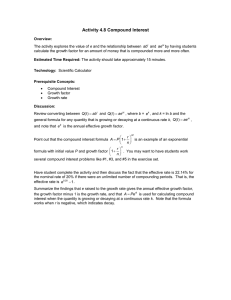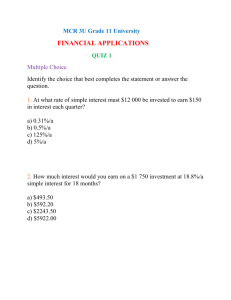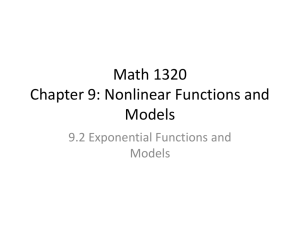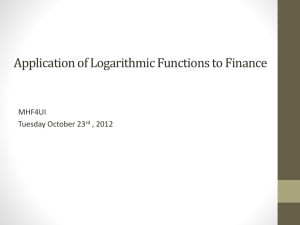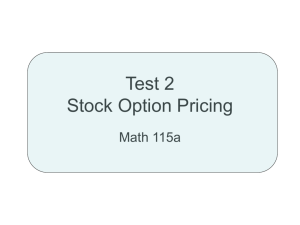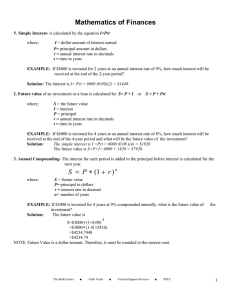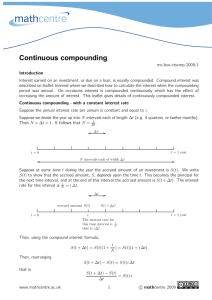Chapter 3: Exponential and Logarithmic Functions
advertisement
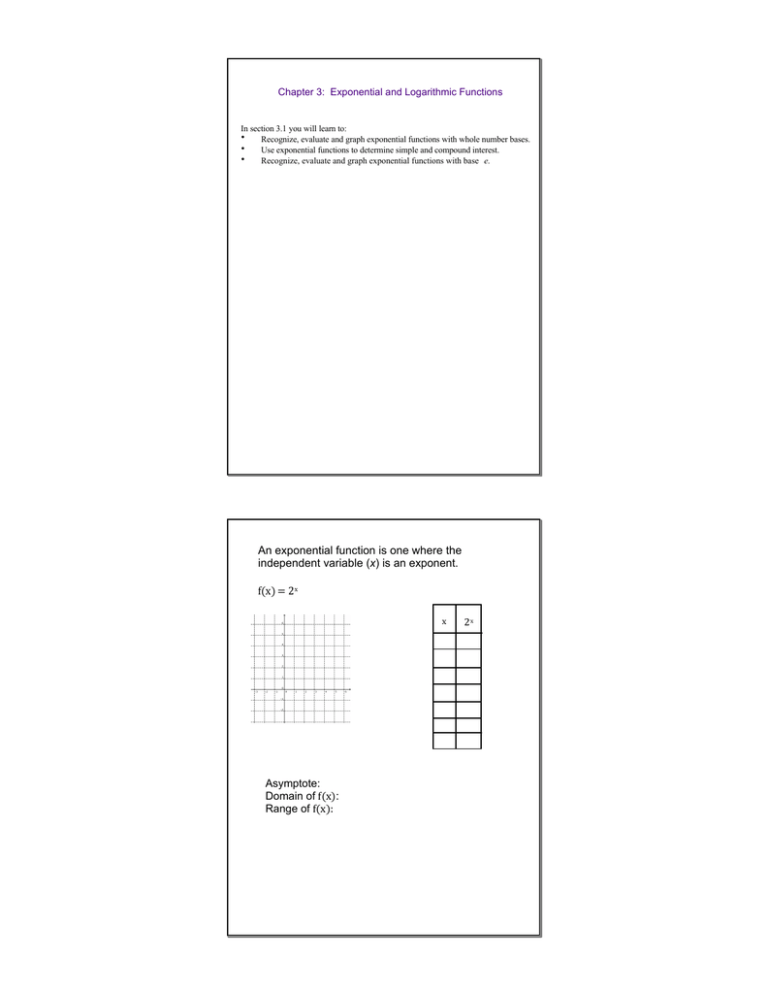
Chapter 3: Exponential and Logarithmic Functions In section 3.1 you will learn to: • Recognize, evaluate and graph exponential functions with whole number bases. • Use exponential functions to determine simple and compound interest. • Recognize, evaluate and graph exponential functions with base e. An exponential function is one where the independent variable (x) is an exponent. f(x) = 2x x Asymptote: Domain of f(x): Range of f(x): 2x f(x) = 4x f(x) = ex where e≈2.718 f(t) = 3-­‐t = (1/3)t Transformations of f(x) = ex f(x) = e-­‐x f(x) = ex-­‐2 f(x) = -­‐ex f(x) = ex -­‐ 3 Problem 1: If P dollars are invested in an account that pays an interest rate of r (expressed as a percent) compounded annually, how much is in the account after: a year? 2 years? 3 years? t years? What if we compound it twice year? Quarterly? Daily? Problem 2: As compounding periods become smaller, the compounding can be considered to be instantaneous. This is known as continuous compounding. The formula for continuous compounding is: At = Pert Discrete compounding: At = P(1+ rn )nt n = number of compounding times per year. t = number of years r = interest rate P = amount invested A = amount after t years. Continuous compounding: At = Per t Problem 3. $12,000 is invested in an account that pays 4.8 % interest. How much can we expect to be in the account after five years if... ... Interest is compounded annually? ... Interest is compounded monthly? ...Interest is compounded daily? ...Interest is compounded continuously? An interesting question which we will be able to solve later in this chapter is how long it takes to double your investment. A loose estimate can be obtained by the Rule of 72.
